REACHing Mississippi’s future scientists
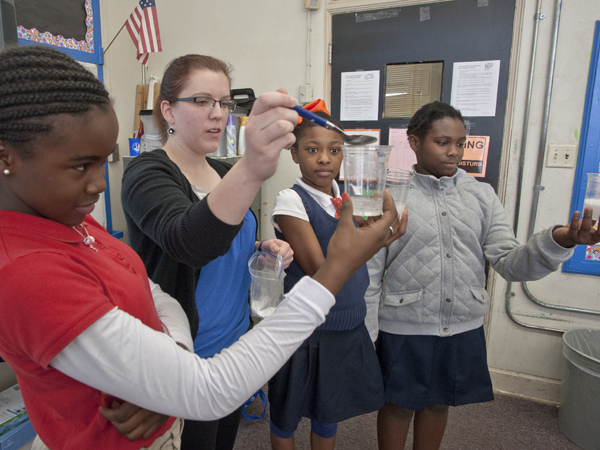
Published in News Stories on December 15, 2014
What’s the difference between a mixture and a compound?
What are the three parts of an atom? What’s a homogeneous substance? A heterogeneous substance?
Fifth-graders at Davis International Baccalaureate (IB) Elementary in Jackson can tell you all about it. They learn about science not just from their classroom teachers, who heavily emphasize that subject, but from students in the School of Graduate Studies in the Health Sciences.
Throughout the school year, future scientists such as Kristin Shirey, a graduate student and fourth-year doctoral student in biochemistry, visit all Davis classrooms in grades 3-5 once a month for 30 minutes to reinforce ongoing science lessons by giving them a fresh, hands-on twist.
The initiative is called Project REACH, and the kids love it. The teachers love it. And, all benefit, including Shirey, who sees herself leading a classroom on the university level after graduation.
“What kind of mixture is this?” Shirey last week asked a roomful of animated fifth-graders in Janet Wallace’s class. She held up a plastic cup filled with different sizes and brands of miniature candy bars.
“Heterogeneous!” the kids shouted in unison. “That’s because it’s not uniform,” Shirey said.
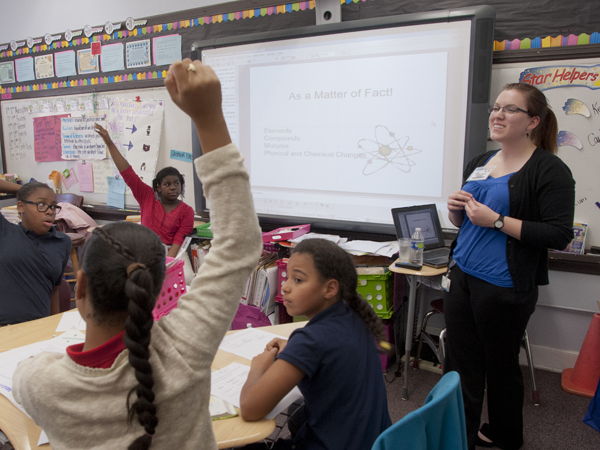
Proof positive that Shirey's approach is working: Students are always anxious to answer her science questions.
She switched to a related lesson on physical and chemical changes. “I need a volunteer,” she said. All hands flew into the air, and she signaled for John May to come to the front of the room.
“Stomp on this can as hard as you can,” she instructed, pointing to a soft drink can on the floor. John did the honors, loudly, to the delight of his classmates.
“Is that a physical or a chemical change?” Shirey asked. Again, the kids knew the score. “Physical!”
In its third year, Project REACH stands for Reaching Education and Changing Healthcare. One of its goals is to create a pool of residents who will be interested in and more capable of addressing future health needs in Mississippi.
“It’s an outreach program for us to share science and science careers with elementary school students,” said Dr. Libby Spence, professor of medical laboratory sciences and associate dean of academic affairs in the graduate school. “It’s to showcase the value of a science degree.
“Some of our students talk about their research, or what they do in their own classrooms. We’re planting the seed that science is fun, and that there are other avenues than medical school.”
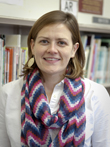
West
Said Beth West, Davis’ program coordinator and teacher trainer: “The students get to interact with someone pursuing a career in science and medicine. It’s a good match for Davis because of our focus on inquiry and the connection of science as an inquiry driven discipline.”
Andre Carr enthusiastically vied for Shirey’s attention as he raised his hand during the day’s lesson, begging to answer questions and be picked to volunteer for hands-on experiments. “A mixture is when two or more things are combined together to make something else,” he explained.
“I love science,” he said after the lesson ended. “I’m expecting to be some type of scientist, maybe a biologist, when I grow up. Science is my favorite subject, and since we study science the most, fifth grade is kind of my favorite year.”
Shirey wants to become a professor after receiving her doctorate next year, but she’s getting valuable experience through Project REACH in relating to students, even though they’re much younger than her target.
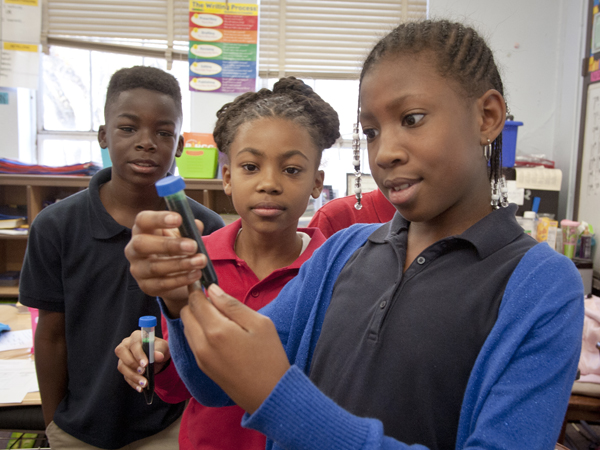
(From left) Kristopher Robinson, Kennedy Robinson and Akierah Walker watch as a bleach solution begins to change to clear the green color in a tube of water.
“I’m getting the opportunity to teach and to promote science education,” said Shirey, a Guntersville, Ala., resident and biology and chemistry graduate of Jacksonville State University. “I enjoy the kids’ excitement and their eagerness to learn.”
Davis fifth-grade teacher Carla Williams joked that Project REACH gives her a little extra credibility with her students. “They think I’m smart because ‘Dr. So-and-So taught us the same thing that you are teaching us,’ ” she said.
Project REACH instructors plan their lessons around units students are currently learning. “It can open up an avenue that we might not have already discussed through the textbook, or through watching videos,” Wallace said.
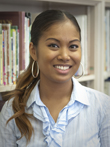
Wallace
“The students ask plenty of questions, and it’s nice for them to learn the answers from experts who are not their regular teachers.”
Those enrolled in the graduate school are reminded often that not everyone will end up in academia, but instead will enjoy careers in other science arenas or in the business world. That lesson isn’t lost on the kids at Davis.
“Project REACH shows them that science goes beyond the classroom,” West said.


